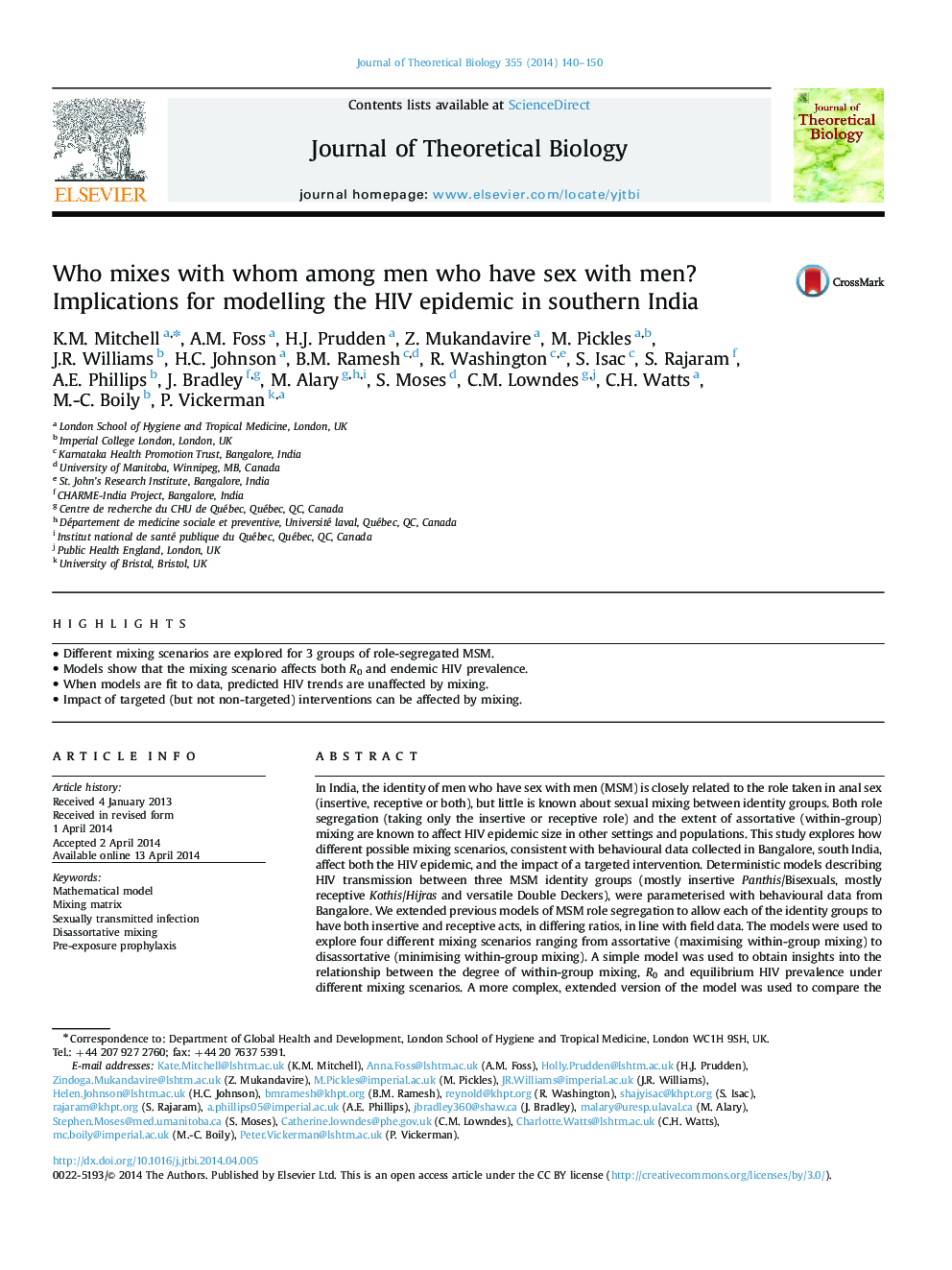| کد مقاله | کد نشریه | سال انتشار | مقاله انگلیسی | نسخه تمام متن |
|---|---|---|---|---|
| 6370492 | 1623855 | 2014 | 11 صفحه PDF | دانلود رایگان |

- Different mixing scenarios are explored for 3 groups of role-segregated MSM.
- Models show that the mixing scenario affects both R0 and endemic HIV prevalence.
- When models are fit to data, predicted HIV trends are unaffected by mixing.
- Impact of targeted (but not non-targeted) interventions can be affected by mixing.
In India, the identity of men who have sex with men (MSM) is closely related to the role taken in anal sex (insertive, receptive or both), but little is known about sexual mixing between identity groups. Both role segregation (taking only the insertive or receptive role) and the extent of assortative (within-group) mixing are known to affect HIV epidemic size in other settings and populations. This study explores how different possible mixing scenarios, consistent with behavioural data collected in Bangalore, south India, affect both the HIV epidemic, and the impact of a targeted intervention. Deterministic models describing HIV transmission between three MSM identity groups (mostly insertive Panthis/Bisexuals, mostly receptive Kothis/Hijras and versatile Double Deckers), were parameterised with behavioural data from Bangalore. We extended previous models of MSM role segregation to allow each of the identity groups to have both insertive and receptive acts, in differing ratios, in line with field data. The models were used to explore four different mixing scenarios ranging from assortative (maximising within-group mixing) to disassortative (minimising within-group mixing). A simple model was used to obtain insights into the relationship between the degree of within-group mixing, R0 and equilibrium HIV prevalence under different mixing scenarios. A more complex, extended version of the model was used to compare the predicted HIV prevalence trends and impact of an HIV intervention when fitted to data from Bangalore. With the simple model, mixing scenarios with increased amounts of assortative (within-group) mixing tended to give rise to a higher R0 and increased the likelihood that an epidemic would occur. When the complex model was fit to HIV prevalence data, large differences in the level of assortative mixing were seen between the fits identified using different mixing scenarios, but little difference was projected in future HIV prevalence trends. An oral pre-exposure prophylaxis (PrEP) intervention was modelled, targeted at the different identity groups. For intervention strategies targeting the receptive or receptive and versatile MSM together, the overall impact was very similar for different mixing patterns. However, for PrEP scenarios targeting insertive or versatile MSM alone, the overall impact varied considerably for different mixing scenarios; more impact was achieved with greater levels of disassortative mixing.
Journal: Journal of Theoretical Biology - Volume 355, 21 August 2014, Pages 140-150